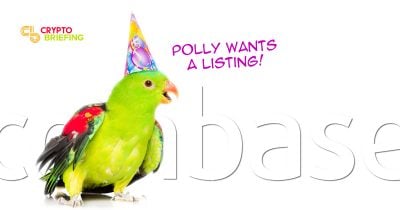Assessing Coinbase Listing Candidates: Part 2

Share this article
Coinbase may have single-handedly reversed Bear season, merely by opening their doors to any cryptocurrency project that cares to apply. Every crypto in the alphabet, from aelf to Zilliqa, is likely lining up for a chance to ride the crypto unicorn.
But getting into Coinbase isn’t quite as easy as getting listed on a Decentralized Exchange. In addition to passing legal muster, new projects also have to satisfy the Digital Asset Framework, which specifies that cryptocurrencies have healthy demand, supply, trading, and decentralization.
In addition to considerations like exchange listings, fiat pairings, active developers, and so on, the framework has a number of requirements that seem designed to keep the Verges and BitConnects from damaging Coinbase’s reputation.
Yesterday we assessed the chances of XRP, Stellar, Dash, ZCash, Doge, Nano and Verge. Today we have some new quick looks at possible candidates for a Coinbase listing.
The Coinbase Checklist
For example, if you want your coin to get listed, Coinbase insists that
“….The team identifies a clear and compelling reason for the native digital asset to exist (i.e. the main purpose is not fundraising).”
This excludes many ICOs.
“…..Trade velocity, or turnover, is a significant part of market capitalization. This is a measure of how easily the asset can be converted to another asset.”
This rules out most Bitcoin forks. And finally,
“The ownership stake retained by the team is a minority stake. There should be a lock-up period and reasonable vesting schedule….”
Which looks pretty bad for XRP.
And, to make things even more interesting, the Framework is just a guideline—ultimately, Coinbase will list whatever it wants. XRP might not get listed, even though it’s No. 3 by market cap; Dogecoin has a pretty good chance, even though it’s only at no. 21.
Here are the other likely candidates, as well as the problems they’re likely to face.
Cardano
Pros: From the surface, Cardano looks like an ideal candidate for a Coinbase listing. The smart contract platform is among the top ten by market capitalization, with reputable founders and none of the negative associations which cling to EOS or Tron. Moreover, Coinbase has already indicated interest in listing the Ada token, so it may just be a matter of time.
Cons: Despite the favorable press, Cardano is still as centralized as a blockchain can get. The token is only used for trading, and the roadmap has not yet reached the point “where the network becomes decentralized.”
That may not be a dealbreaker—especially considering that Cardano’s name is already on the guest list.
EOS:
Pro: EOS ticks off all the major boxes for a Coinbase listing: a big network, a huge base of developers, decentralized exchanges, multiple fiat pairings, and smart contracts that are better and more widely-used than Ethereum dApps.
Con: Nestled among the paragraphs of the DAF is the following requirement:
Change in Market Capitalization
The market capitalization has grown after the network has activated, demonstrating increased demand for the asset after the project’s launch.
EOS tokens were worth $9 when the network launched in June, and are now worth around $5. EOS advocates might be able to explain their way out of this one, considering the market-wide plunge, but it will probably take some fast talking.
Tron:
Pro: Formerly regarded as the Theranos of crypto, Tron seems to be brushing off its image with some serious-looking developments. They’ve recently integrated BitTorrent with the blockchain, meaning that people will actually have a reason to seed their pirated movies after they finish downloading.
Cons: If this question had come up a few months ago, Tron would probably be disqualified by the enormous centralization of tokens. But now we’re not so sure. Tronscan data shows that the Foundation has frozen most of its share of coins, which–depending on individual founders’ wallets–might put them under Coinbase guidelines.
Iota:
Pro: If Coinbase is looking for cryptos that are different and out-of-the-box, Iota should be a shoe-in. The Internet-of-Things-currency is the only major coin that doesn’t use a blockchain, and it’s also amassed formidable partnerships to experiment with smart cars and connected machines. They’ve even developed their own programming language and ternary computations, for no other reason than because they can.
Cons: There are a lot of reasons to keep Iota at arms length. Leaving aside the embarrassing bugs, infighting and marketing-by-lawsuit, Coinbase requires that the network “enables trustless consensus.” At present, the Tangle is still intermediated by a Coordinator, which is as centralized and trust-requiring as it gets.
0x:
Pro: The last time this question came up, 0x seemed like the most likely candidate for a Coinbase listing. Per Crypto Briefing’s Andrew Macdonald:
….and others
This glosses over a whole list of other likely applicants, from VeChain and OmiseGo to Ark and Lisk, as well as about 1690 others.
We don’t have space to cover them all, but they’re likely to face the same kinds of problems. Market Capitalization is the biggest sticking point; smaller coins are easier to manipulate, as well as less secure.
Some otherwise-qualified projects aren’t meant for consumers–they’re aimed at industries or specific use cases. Others, like Elastos, are big hits abroad, but not well-known in the US.
The biggest problem is showing that there’s demand–Coinbase isn’t going to put a currency in the hands of 13 million users, unless they’re certain that the users want it.
The author is invested in several cryptocurrencies, including Cardano.
Share this article
